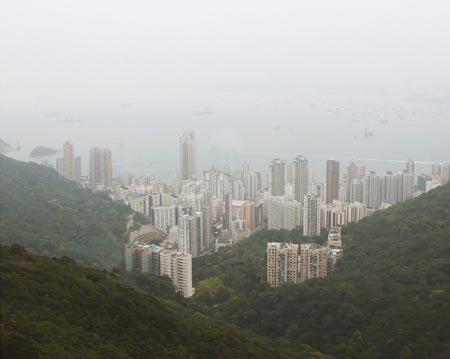Hong Kong 2008

Professors: Prof. Roger Diener, Prof. Marcel Meili, lecturer Christian Schmid
Mathias Gunz, Rolf Jenni, Christian Mueller Inderbitzin, Milica Topalovic
Exercise types: “P” (for diploma students) or “e” / “e+i” (for bachelor and master students)
Locations: Group work in Basel and Hong Kong
Start: Tuesday, 19 February 2008 at 10am at ETH Studio Basel, Spitalstrasse 8, 4056 Basel
The Asian city of Hong Kong is a place of extraordinary economic and demographic dynamics. Formerly under British rule, it has undergone a radical change in orientation since the 1997 handover. The creation of the HKSAR (Hong Kong Special Administrative Region) as a city-state implies an ambiguous and problematic positioning towards the People’s Republic of China. With its profile shifting towards that of a global finance and service center, while the manufacturing industries move and expand to the Pearl River Delta, Hong Kong continues to play a specific role at a forefront of this competitive network of cities.
Hong Kong is a port city, with a high turnover both of goods and of people. Since the 1950s, Hong Kong has experienced unprecedented growth as a gateway between China, Southeast Asia, and the rest of the world, helped by a ceaseless inbound stream of economic and political migrants from the mainland. The rapid pace of urban construction in order to provide housing for the incoming population, which occupied every available site, required pragmatism, architectural and urbanistic innovation, and cooperation between public authorities and private players.
These powerful forces, together with the specific natural conditions of the mountainous terrain with its tropical forests and lack of building land have shaped Hong Kong as a city of extraordinary beauty and of various urban extremes. It is the city with the highest urban density in the world, with 6.6 million inhabitants and a Floor Area Ratio (FAR) ranging from 10 to 12. It is the metropolis with the lowest private car ownership in the world, with residents resorting almost exclusively to public transport, and is still considered a pedestrian-friendly city. Architecturally, it is a monotypical city featuring efficient tower typologies on parking and commercial plinths that are parametrically designed.
Among the central themes of ETH Studio Basel’s investigations in Hong Kong since 2004, which will continue during the following semester, are the following: Living and working environments in high-density architecture from towers to megaforms; the artificial relation to topography and the terrain; urban nature and its sharp boundary toward the city; the widespread denial of public space at the foot of office and residential high-rises; creation of urban density and development by infrastructure; the roles of public and private actors in the city; the growing importance of history and heritage versus the benefits of commercial development; and the links to mainland China and the Pearl River Delta.
PROJECTS: HONG KONG 04, PEOPLE: PROF. MARCEL MEILI, PROF. ROGER DIENER, MILICA TOPALOVIC, ROLF JENNI, PROF. DR. CHRISTIAN SCHMID

